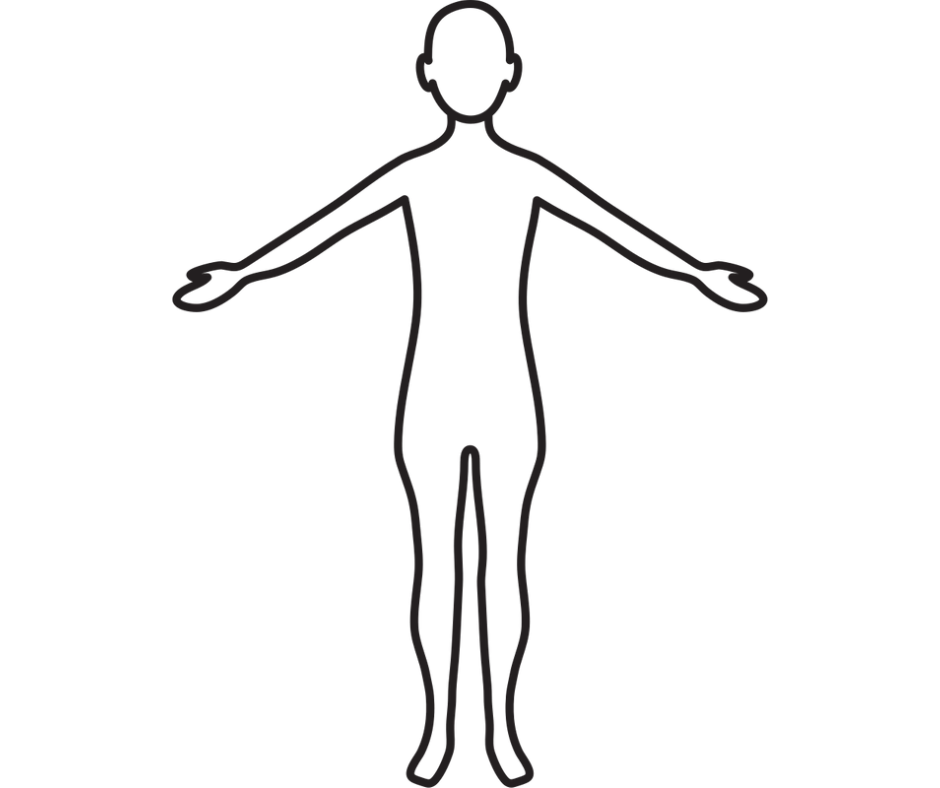
Many people I see find it very hard to be aware of their bodies. When that happens, it is very hard to understand the emotions you feel.
It is possible to learn how to do this. I know, because I taught myself to do this.
FEELING YOUR FEELINGS CAN BE SCARY
Many people are afraid of their feelings. Feelings can be scary. When you are used to managing by pretending you don’t feel anything it can be frightening to start feeling things. It feels unsafe.
It is possible to learn how to feel your feelings, the emotions that spring from them, and feel safe as well.
THE IMPORTANCE OF SELF REGULATION
Before you can start to learn how to be in your body, you need to learn how to feel safe.
Learning techniques to regulate your emotions (known as self-regulation) is essential.
WHEN YOU FEEL DISCONNECTED FROM YOUR BODY
Do you find you feel disconnected from your body, not just unaware of it but actually disconnected? This is known as dissociation. People who dissociate often report the following physical signs:
• Tension in all or part of the body
• Anxiety
• Tightness in the chest
• Difficulty breathing or feeling that breathing has become quick and shallow, or noticing you are holding your breath.
• Your vision becomes blurry
• All or part of your body feels numb
• You feel dizzy.
• You feel like you are floating.
• Time passes and you aren’t aware of what you did during those missing minutes/hours.
• You find yourself somewhere and don’t know how you got there.
What I am about to discuss is for anyone who wants to be more aware of their body.
BEFORE WE START, SOME QUESTIONS
Before we start I want to ask you some questions.
• Do you want to feel your body more?
• How much time do you find yourself thinking, particularly anxious and scattered thoughts?
• Do you feel safe feeling your emotions?
• What does it feel like to be in your body?
• Do you like your body?
• Do you believe in the past your body has betrayed you? Maybe this has been through illness, emotional pain, responding to bad things in ways you didn’t want it to?
• Do you know how to identify when you may dissociate from your body?
• Do you deliberately go into your head, use your imagination to fantasise or dissociate to avoid feeling pain?
• Are you prepared to feel the emotions and the memories associated with them? There can be no reconnecting with your body unless you do that.
THIS IS WHAT I WILL START WITH IF YOU COME TO SEE ME
Before you can learn how to feel your body more, you need to be sure you are okay to start on that journey. Some people prefer the constant anxiety and fear because it is familiar and are too scared to learn a better, more life affirming way of being.
The information I am about to share is what I teach you if you come to see me. The aim of these exercises is to help you to feel your body, to learn the signs in your body of different emotions. When these exercises are practised they are very effective.
IMPORTANT NOTE
Please note that these exercises are about learning to feel what is happening in your body and understand your emotions. You may still experience fear when you feel these emotions. If you have overwhelmingly frightening emotions it is best to see a counsellor who specialises in working with trauma. It is best if that person has trained with the Blue Knot Foundation and is familiar with their Trauma Treatment Guidelines.
MY AIMS IN WORKING WITH YOU
As a trauma counsellor my aim in working with you is to:
• Be a witness to your story
• Hear you as you talk about these things in your life
• See you
• Help you to learn how to self-regulate
• Help you learn to identify the feelings in your body and the emotions attached to them
• Help you to heal and learn how to live a plentiful life, not one hampered by the restrictions of unhealed wounds from the past.
• Follow the Blue Knot Foundation trauma guidelines.
WHAT AM I FEELING IN MY BODY EXERCISE:
You will need:
• A body outline. You can draw this yourself or use the one that is illustrating this blog
• Coloured pencils/crayons in diverse colours.
• A notebook
What to do:
- Pay attention to your body. Spend a few minutes a few times a day just observing what you notice in your body. Breathe in so that you feel your tummy rise and notice the feeling of your chest expanding. Hold the breath for a moment and then gently let it go. Notice what it feels like to leave your body.
- After 5 in and out breaths, notice your body touching the chair (if you are sitting). If you are lying notice your body touching the surface you are lying on. If you are standing notice your feet touching the floor/ground.
- Notice anything else happening in your body. Is your stomach rumbling? Do you have pain or tightness anywhere?
- Make some notes in your notebook about what you felt and whether that was comfortable or not.
- This may not happen immediately, but you will notice that you start to become aware of body sensations when you are thinking things. For example: you may be feeling rushed to get something done and become aware of tension, heat, cold, numbness, or any other sensation in a part of your body. Pay attention to that.
When you can, note these down in your notebook and mark on the body outline where you felt the sensations in your body. Use whatever colour seems best to match that sensation. - Keep practising breathing and being aware of your body and noting down things you are noticing in your body at different times.
- Over time you will find it easer to do this and may start to be aware of how certain emotions are felt in your body and be able to identify them from what you are feeling in your body.
- If at any time you feel overwhelmed with this exploration then seek the assistance of a trauma trained professional.
HOW THIS EXERCISE CAN HELP YOU
This exercise is not a cure for trauma, but it is helpful for learning how to be aware of your body. Many people who do not have trauma histories are not aware of their bodies. Our culture does not teach this skill, and many miss out on learning it.
If you have trauma then it is useful to seek help from a trauma trained professional.
CAN I HELP YOU?
If you would like to talk to me about how I can help you with your trauma and/or learning how to be aware of your body, please contact me on 0409396608 or nan@plentifullifecounselling.com.au
If you would like to learn more, I write a regular newsletter with interesting information, tips, information on courses, and the occasional freebie. At the moment I have a free mindfulness meditation for anyone who signs up to my newsletter. This meditation offers a way to safely explore your feelings and learn to be okay with them. If you would like to subscribe please click on the link here: http://eepurl.com/g8Jpiz
